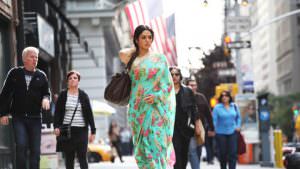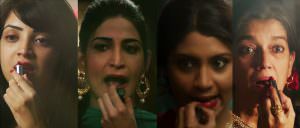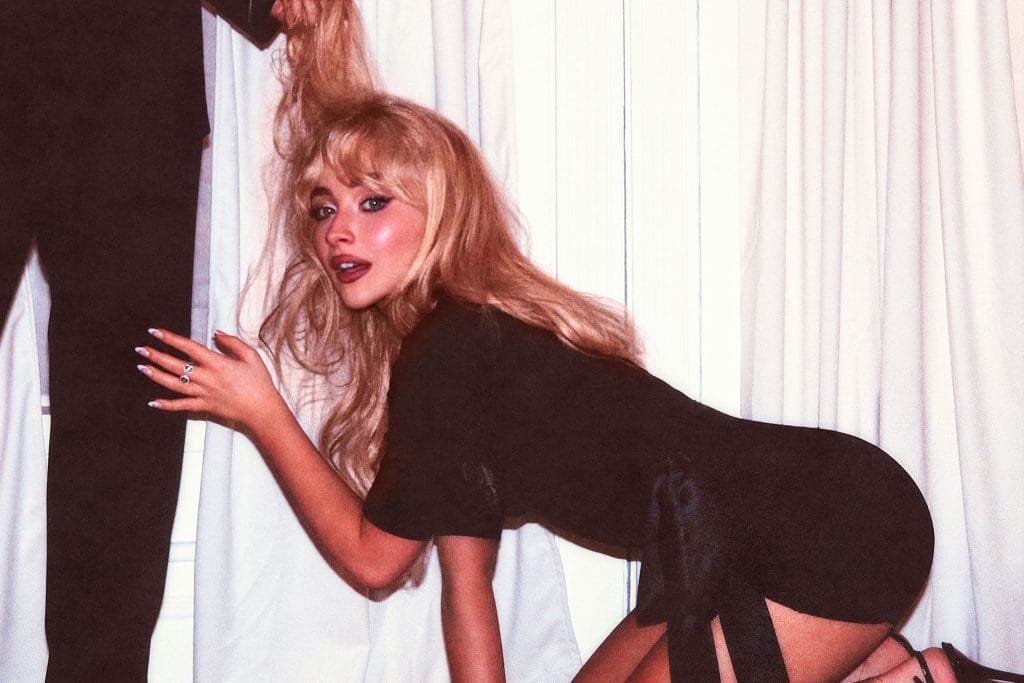Bollywood, despite the offensive faux-feminism or fake feminism that is presented in ‘modern’ movies, solely for the purpose of capitalising on its relevance, engages in a largely hetero-male or straight male gaze. How does it make a place for female gaze then, and what is female gaze? In one sense, it is the legitimation of women as subjective, who are capable of sexual desire. It is the legitimation of female perspective.

Poster of Jab Harry Met Sejal. The film was largely criticised for the constant validation Anushka’s character Sejal seeks from Harry. Image Credit: News18
The reason I accuse ‘progressive’ Bollywood movies of portraying faux-feminism is that the characterisation of these women, despite these women being sexually liberated, caters to the male gaze. The mainstream narrative in movies is biased towards the gratification of the male experience and the female protagonists mostly function to serve this male experience.
They are in all in a sense allowed to be educated, liberal and essentially independent only if it ends with them being institutionalised by the same institutions who oppress them. The principles of these female protagonists even if they are in alignment with feminism their decisions tend to be along the line of patriarchy. This cognitive dissonance or the difference in the approach in ideology and practice is almost never addressed.
I have always found male narratives in Bollywood stifling, as they tend to be narcissistic and most often self-congratulatory for men not using male entitlement and being oppressive. They only allow brief windows of opportunity for the women to act as a person independent of the journey of the male protagonist and want to be pedestalized for doing the same.
In other words, Bollywood likes to capitalise off feminist ideology while giving precedence to hetero-male or straight male supremacy.
Female gaze and desire
A decade ago back in 2007, Sanjay Leela Bhansali incorporated a towel dance number in the movie Saawariya that would require the male protagonist to strip and present himself as a viable sexual candidate. The song starts with the male protagonist standing at the edge of the window in a towel. In the first stanza, after the first two lines, he takes off the towel – the moment largely interpreted as catering to female desire. Saawariya did poorly at the box office, but Ranbir Kapoor immediately rose to stardom with a huge female following and gained popularity in the gay community.

Ranbir Kapoor in Saawariya. Credit: iDiva
Sexualisation doesn’t equate objectification. Objectification is rendering a person without any agency over their own body. Sexualisation doesn’t strip a person from exercising their agency and does not render the person’s function solely to be of sexual gratification, which is exactly what objectification does.
Ranbir Kapoor was even asked to do the towel dance in every reality show years after Saawariya released. He himself admitted in an interview that song was a career-defining moment for him.
The point of this discussion is that desire is a commodity not of – and only limited to men, and the success of the towel song is a testament to that.
I believe that not enough credit is given to the song for changing Bollywood as it did. It completely changed the way we look at men’s bodies in cinema. The song cultivated the idea of a man’s body not catering to what men are according to men, but what women find desirable.

John Abraham in Dostana.
Not long after, we saw John Abraham doing a striptease in an otherwise grossly homophobic movie Dostana, which again proved just as sensational as the makers would have hoped. The popularity of the strip-tease outdid the popularity of the movie, which was a hit.
It is now commonplace in Bollywood to provide for consumption of female desire. Though there is a long way to go in terms of recognising women as sexual beings free to act with their body as they please, without a stigma attached to it, at least the process of recognition of female desire has been initiated.
Women-centric movies*
In 2012, Sri Devi starring English Vinglish released in theatres. Directed by Gauri Shinde, it was about an Indian woman trying to find her place in the modern world by learning English as a tool of empowerment.

Sri Devi in English Vinglish. Credit: Hollywood Reporter
Learning the English language is a means of gaining agency for Sri Devi’s character, who despite being broad-minded and progressive, is taken for granted solely and judged for not being able to speak English. She is often the victim of emotional violence, the kind of violence that rarely gets acknowledged because she is not the breadwinner and is economically dependent on her husband, and people have the tendency to give economic security precedence over emotional security.
Her emotional labour and contributions in the house are de-recognised solely by the virtue of not knowing a language that is not even her first language. The character empowers herself by taking the decision to learn the language so she can participate in the narrative she is often left out of, because of limitations that were not her own fault.

Image Credit: Bollywood Hungama
Another women-centric film by Gauri Shinde, Dear Zindagi was released in 2016, starring Alia Bhatt in the pivotal role. Alia Bhatt’s character is unlikable and is unable to form healthy relationships due to repressed childhood issues which she was not able to deal with as a child, due to being emotionally unequipped back then.
It is a nuanced coming of age story of her coming to terms with her issues of abandonment and what it means to be a woman in the modern world. The character exclusively points out how she feels inadequate for not being an ideal woman in a society that indulges in slut-shaming and doesn’t acknowledge female desire. The film completely normalises it and states that not only female desire is not wrong, but makes complete sense.
Women’s stories and stories by women are important. And we need more female directors in Bollywood.

Lipstick Under My Burkha is infamous for being banned by CBFC for legitimising female desire. Credit: Sify
Lipstick Under My Burkha, directed by Alankrita Srivastava, has been infamous for its tussle with the CBFC. They were refused certification because it was a ‘women-centric’ movie, proving that patriarchal institutions can only allow the validation of female desire till it doesn’t threaten to dismantle them. For every time we take one step in progression with a film like Queen, we take two steps back in regression with what the CBFC tried to do with this film.

Lisa Haydon(L) and Kangana Ranaut(R) in the Queen. Credit: Filmibeat
The Kangana Ranaut starrer Queen, after the release of which Ranaut found herself on the cusp of super-stardom, is a story of a woman’s journey towards self-sufficiency. The film is never susceptible to the male gaze and celebrates the female experience, in one sense transcending traditional storytelling (which mostly cater to male gaze) and bringing the female experience to the mainstream.
Queen did a lot of wonderful things in legitimising the female perspective, from celebrating female friendships to taking agency in initiating something romantic with the person you desire. But the most important thing it did was normalising female experience as a human experience, one that doesn’t have to be susceptible to the male gaze at any point.
The exploration of female desire is at a nascent stage in Bollywood. Something as natural as women’s sexuality shouldn’t have a stigma attached to it in the first place. But yet it does, and here we are with oppressive structures self-congratulating themselves everytime they think they have done what is a decent job of representing the female.
The accuracy of the representation then becomes irrelevant. We need more female storytellers so that we don’t have to keep up with a half-baked representation of women anymore and have a more nuanced representation of the experience of women in cinema.
Also Read: Why No Chuddy Buddies For Women In Bollywood?
*These are by no means the only women-centric films of the last decade, just the ones I am more familiar with. Margarita with a Straw, Nil Battey Sannata, Angry Indian Goddesses are few of the other films that celebrate female identity as well, but I haven’t included them for the sake of space and convenience. Bollywood is only at a nascent stage of exploring the female gaze and its repercussions.
Featured Image Credit: Indian Express
About the author(s)
Holden Caulfield thinks you are a phony.




